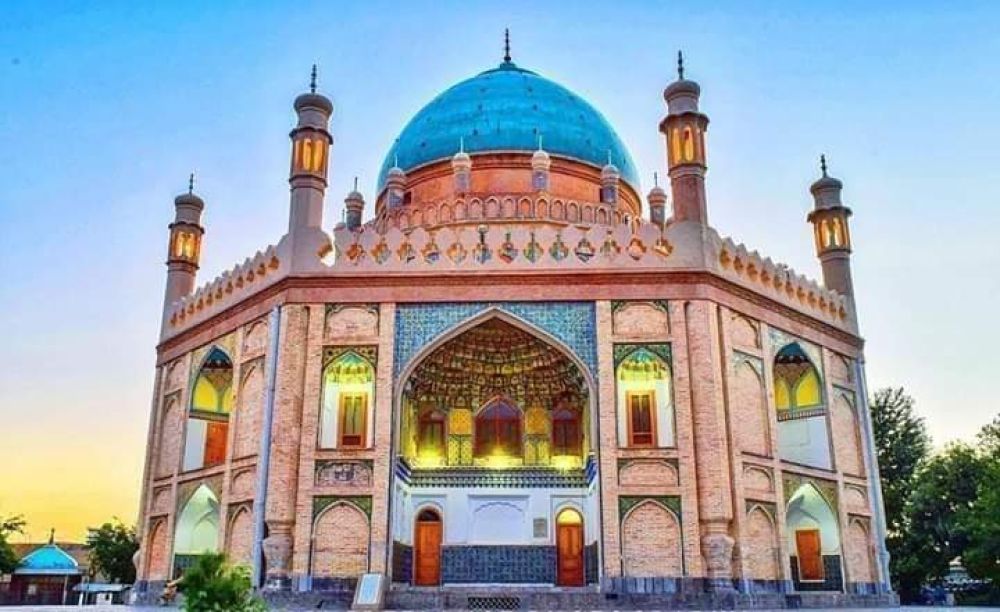

The Mausoleum of Ahmad Shah Durrani, also known as Ahmad Shah Baba, is a revered site located in the city of Kandahar, Afghanistan. Ahmad Shah Durrani, often credited as the founder of the modern state of Afghanistan, was a prominent figure in Afghan history, and his mausoleum remains a significant landmark for both historical and cultural reasons.
Ahmad Shah Durrani, also known as Ahmad Shah Abdali, was born in 1722 and became the leader of the Afghan empire in 1747. Under his ruling, the empire expanded to include what is today Afghanistan, Pakistan, eastern Iran, and northern India. After his death in 1772, he was buried in Kandahar, a city that he had designated as the capital of his empire. The mausoleum was constructed to honor his legacy and to serve as a resting place for his remains.
Throughout history, the Mausoleum of Ahmad Shah Durrani attracted visitors and pilgrims interested in Afghan history and the figure of Ahmad Shah Durrani himself. Known locally as "Ahmad Shah Baba Mazar," the mausoleum used to be an essential stop for those wishing to pay homage to the "Father of the Nation."
However, due to the geopolitical situation in Afghanistan over the past several decades, tourism has been turbulent. Political instability and security concerns have significantly impacted the tourism industry. During peaceful periods, there have been initiatives to preserve and promote historical sites like the mausoleum, but these have often been disrupted by conflict.
In recent times, the situation in Afghanistan has made tourism to places like the Mausoleum of Ahmad Shah Durrani infrequent and mostly limited to domestic visitors. It is occasionally visited by historians and scholars with a particular interest in Afghan history, although such visits require careful consideration of safety and security.
Global interactions and the digital age have allowed for a different kind of tourism, with people increasingly engaging with historical sites through virtual tours and online platforms. While not a substitute for in-person visitation, these digital experiences allow for the continued appreciation and study of significant Afghan landmarks.
Note: It is important for prospective visitors to consult with travel advisories and professionals before planning any potential visit to the mausoleum or the region, due to the volatile nature of the security situation.
If circumstances allow, there is hope that the Mausoleum of Ahmad Shah Durrani will once again become an accessible site for international travelers interested in Afghan culture and history. Efforts to restore and protect Afghanistan's historical heritage could pave the way for a revival of cultural tourism, contributing to the promotion of peace and economic development in the region.
In the meantime, the mausoleum stands as a symbol of Afghanistan's rich history and the enduring legacy of one of its most notable historical figures.